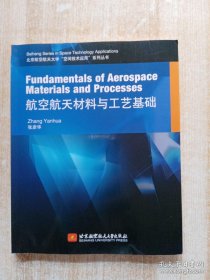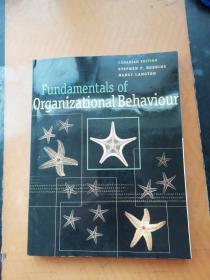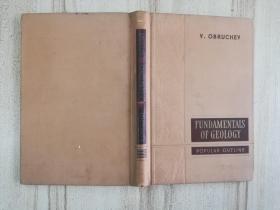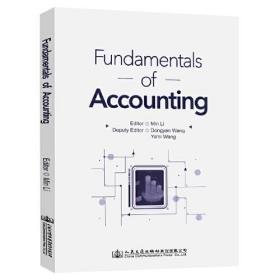
Fundamentals of Aerospace Materials and Processes 航空航天材料与工艺基础
¥ 16 2.1折 ¥ 75 八五品
仅1件
作者张彦华 著
出版社北京航空航天大学出版社
出版时间2016-01
版次1
装帧平装
上书时间2024-11-30
- 最新上架
商品详情
- 品相描述:八五品
图书标准信息
- 作者 张彦华 著
- 出版社 北京航空航天大学出版社
- 出版时间 2016-01
- 版次 1
- ISBN 9787512419247
- 定价 75.00元
- 装帧 平装
- 开本 16开
- 纸张 胶版纸
- 页数 329页
- 字数 476千字
- 【内容简介】
-
FundamentalsofAerospaceMaterialsandProcesses航空航天
Themainobjectiveinthisbookistopresentthefundamentalsofmaterialsscienceandprocessesusedinaerospaceengineering.Thebookstartswithanoverviewofthestructuresofmaterials(Chapter1).
Chapter2
discussesthemechanicalpropertiesofmaterialsandChapter3examinesthesolidificationandphasediagrams.
ThisisfollowedbyChapter4through6arethendevotedtotheimportantengineeringmaterials.ThenextthreeChapters(Chapters7through9)dealwiththeimportantfieldofmaterialsprocesses,namelycasting,deformationformingandwelding.Chapter10representsthematerialsandprocessesselectionforaerospace
structures.
ThebookisintendedfortheengineerorstudentwhowantstolearnmoreaboutthematerialsandprocesGsesusedinaerospacestructure.Itwouldbeusefultodesigners,structuralengineers,materialandprocessesengineersandmanufacturingengineersinvolvedwithadvancedmaterials.
- 【目录】
-
Introduction
0.1 Evolution of aerospace materials
0.2 Engineering materials and process
0.3 The materials process for aerospace structures
Chapter 1 Structure of Materials
1.1 Introduction
1.2 Atomic structure
1.3 Atomic bonding
1.3.1 Ionic bonding
1.3.2 Covalent bonding
1.3.3 Metallic bonding
1.3.4 Van der Waals bonding
1.4 Crystal structure of metals
1.4.1 Atomic arrangements in materials
1.4.2 Metallic crystalline structures
1.5 Crystal defects
1.5.1 Point defects
1.5.2 Linear defects—dislocations
1.5.3 Planar defects
1.5.4 Bulk defects
1.6 Alloys and microstructure
1.6.1 Alloying
1.6.2 Phases
1.6.3 Microstructure
Chapter 2 Mechanical Properties of Materials
2.1 Introduction
2.2 Tensile properties
2.2.1 Stress and strain
2.2.2 The tensile test
2.2.3 Yield point
2.2.4 Ultimate tensile strength
2.3 Ductility and strain hardening
2.3.1 Ductility
2.3.2 Strain hardening
2.4 Hardness
2.4.1 Brinell hardness test
2.4.2 Rockwell hardness test
2.4.3 Vickers and Knoop hardness tests
2.5 Creep and stress rupture properties
2.5.1 Creep properties
2.5.2 Stress rupture properties
2.6 Toughness
2.6.1 Impact toughness
2.6.2 Fracture toughness
2.7 Fatigue properties
2.7.1 Nature of fatigue failure
2.7.2 Factors affecting fatigue life
2.7.3 S—N fatigue properties
2.7.4 Fatigue crack growth rate
Chapter 3Solidification and Phase Diagrams
3.1 Introduction
3.2 Phase diagram
3.2.1 Common terms
3.2.2 Isomorphous
3.2.3 Eutectic
3.2.4 Peritectic reaction
3.2.5 Eutectoid
3.3 Fe—C phase diagram and microstructure
3.3.1 Fe—C phase diagram
3.3.2 Fe—C alloys microstructure
Chapter 4Ferrous Alloys
4.1 Introduction
4.2 Classification of ferrous alloys
4.3 Alloy steels
4.3.1Alloying elements in steel
4.3.2 High—Strength Low—Alloy (HSLA) steels
4.3.3 High—alloy steels
4.3.4 Stainless steels
4.3.5 Tool steels
4.3.6 Ultra—high strength steels
4.4 Heat treatments
4.4.1 Transformation diagrams
4.4.2 Types of heat treatment
4.5 Surface hardening
4.5.1 Surface quenching
4.5.2 Carburizing and nitriding
Chapter 5Non—ferrous Alloys
5.1 Introduction
5.2 Aluminum and aluminum alloys
5.2.1 Physical metallurgy of aluminum
5.2.2 Aluminum alloy designations
5.3 Copper and its alloys
5.4 Magnesium alloys
5.5 Titanium and its alloys
5.5.1 Development and application of titanium alloys
5.5.2 Metallurgy of titanium alloys
5.6 Superalloys
5.6.1 Nickel and nickel alloys
5.6.2 Cobalt—based superalloys
5.6.3 Iron—based superalloys
Chapter 6 Polymer, Ceramic and Composite Materials
6.1 Introduction
6.2 Polymer
6.2.1 Polymer structure and synthesis
6.2.2 Polymer crystallinity
6.2.3 Mechanical behavior of polymers
6.2.4 Characteristics and typical applications of few plastic materials
6.3 Ceramics
6.3.1 Structures of ceramic materials
6.3.2 Ceramic processing
6.3.3 General properties of ceramics
6.3.4 Common structural ceramics
6.4 Composite
6.4.1 Composite structure
6.4.2 General types of matrix materials
6.4.3 Reinforcements
Chapter 7 Casting Processes
7.1 Introduction
7.2 Sand casting
7.3 Investment casting
7.4 Die casting
7.5 Permanent mold casting
7.6 Centrifugal casting
7.7 Casting techniques for single—crystal components
7.8 Casting microstructure and defects
Chapter 8Deformation Forming Processes
8.1 Introduction
8.2 Plastic deformation and formability
8.3 Bulk deformation processes
8.3.1 Forging processes
8.3.2 Extrusion and drawing processes
8.3.3 Rolling processes
8.4 Sheet metal forming
8.4.1 Blanking and piercing
8.4.2 Bending
8.4.3 Stamping or deep drawing
8.4.4 Stretch forming
8.4.5 Hydroforming
8.4.6 Metal spinning
……
Chapter 9 Welding Processes
Chapter 10 Materials Selection for Aerospace Structural Application
References
相关推荐
-

FUNDAMENTALS OF
八五品北京
¥ 80.00
-

Fundamentals of
九品北京
¥ 260.00
-

FUNDAMENTALS OF PHOTOGRAPHY
八五品芜湖
¥ 120.00
-

Fundamentals of Geology
八五品天津
¥ 25.00
-

Fundamentals of Accounting
全新保定
¥ 26.40
-

FUNDAMENTALS OF CHEMISTRY
九品北京
¥ 100.00
-

Fundamentals of Accounting
全新无锡
¥ 31.20
-

Fundamentals of Accounting
全新长沙
¥ 9.44
-

Fundamentals of Accounting
全新无锡
¥ 26.52
-

Fundamentals of Accounting
全新北京
¥ 23.70
— 没有更多了 —


















以下为对购买帮助不大的评价